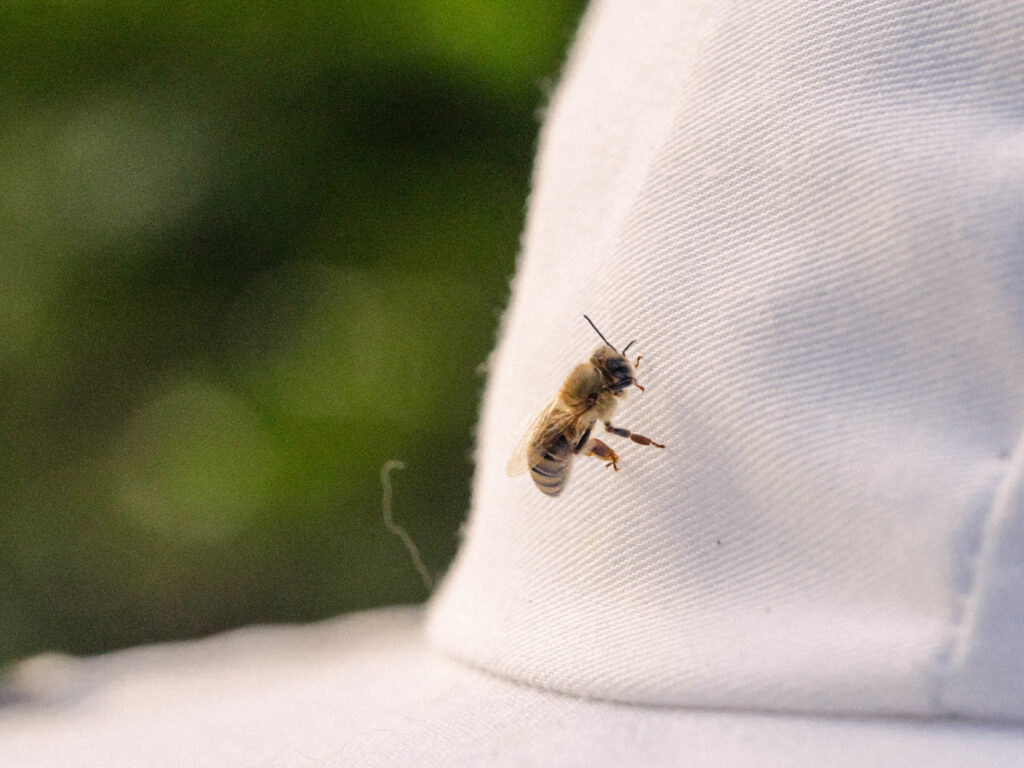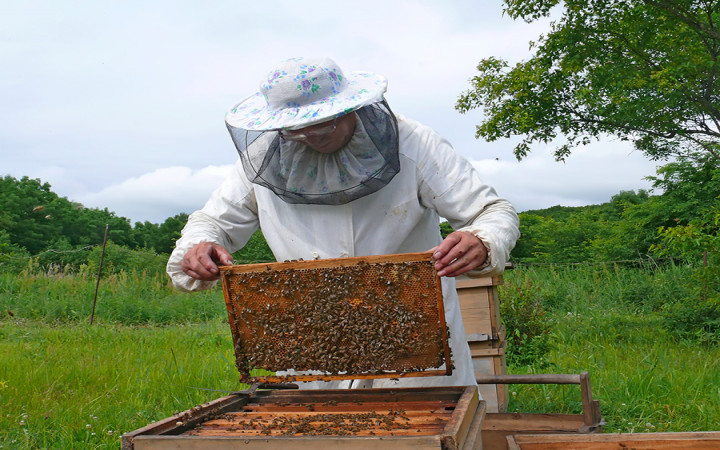
In the intriguing world of beekeeping, one question often arises: do beekeepers get stung? As you embark on a journey through the buzzing hives and honey-filled combs, you may wonder about the inevitable encounters with bees and their notorious stingers. Discover the surprising truth behind the beekeeping experience, where harmony with these fascinating creatures comes at a small but prickly price.
Overview
Beekeeping is a fascinating and rewarding hobby that has been practiced for centuries. It involves the management and care of honey bees, primarily for the production of honey, beeswax, and other bee-related products. While beekeeping can be an enjoyable and fulfilling activity, it’s important to understand that bee stings are an integral part of the process. Beekeepers play a crucial role in the well-being of the bees and the overall health of our ecosystem.
Bee Sting Basics
To understand the role of bee stings in beekeeping, it’s essential to have a basic understanding of the anatomy of a bee sting. A bee’s stinger is a modified version of its ovipositor, or egg-laying tube, and has a barbed structure that allows it to penetrate the skin of its target. This barbed structure is what causes the stinger to remain embedded in the skin, and ultimately leads to the bee’s death after it stings.
The venom composition of a bee sting is a complex mixture of various substances, including proteins, enzymes, peptides, and chemicals. The primary component responsible for the pain and allergic reactions associated with bee stings is melittin, a peptide found in the venom. It is crucial to note that the venom composition can vary between bee species, which may result in differing reactions to bee stings.

Reaction to Bee Stings
The reaction to a bee sting can vary greatly from person to person. For most individuals, a bee sting will cause pain, redness, and swelling in the affected area. These local reactions are common and often resolve within a few hours or days. However, some people may experience more severe reactions, such as large localized reactions or systemic allergic reactions. It’s important to be aware of these possibilities and take appropriate precautions.
Preventative Measures
While bee stings are an unavoidable part of beekeeping, there are several measures that can be taken to minimize the risk of getting stung. The use of protective clothing and gear is crucial in preventing bee stings. A beekeeper typically wears a protective suit, gloves, and a veil to shield themselves from bee stings. Choosing the right clothing and ensuring it fits properly is essential to maximize protection.
In addition to protective clothing, adopting certain beekeeping techniques can help minimize stings. The careful and gentle handling of bees can reduce the likelihood of them becoming defensive and aggressive. It’s also important to consider the location and placement of the beehive. Placing hives in areas where bees have access to a good source of nectar and pollen can help keep them content and less likely to sting.
Handling Bees
Approaching a beehive requires a calm and cautious approach. Quick movements and disturbances can trigger the bees to feel threatened and result in stinging incidents. To minimize the risk of stings, beekeepers should approach the hive slowly and steadily. Smoking the bees with a bee smoker can also help keep them calm and reduce aggression.
Working with bees inside the hive involves skills and techniques that beekeepers develop through experience. It’s crucial to handle the frames and combs gently to avoid crushing or injuring the bees. Proper use of tools, such as a bee brush or hive tool, can aid in this process. Maintaining good communication and coordination with fellow beekeepers during hive inspections is also important for safety.
Occasionally, beekeepers may encounter aggressive bees that pose a higher risk of stinging. These bees may be genetically predisposed to more aggressive behavior or may become defensive due to external factors. In such situations, it is recommended to have a plan in place to deal with these bees, which may involve wearing extra protective gear or calling for professional assistance.
Beekeeper Skill and Experience
The skill and experience of a beekeeper can significantly impact the frequency of stinging incidents. Experienced beekeepers tend to develop a more refined sense of handling bees, which allows them to minimize disturbances and potential aggression. They are adept at recognizing cues from the bees and working in a way that minimizes agitation. Beginners, on the other hand, may take some time to develop these skills and may experience more stinging incidents initially.
Developing a tolerance to bee stings is a natural progression for many beekeepers. With repeated exposure and proper handling techniques, some beekeepers find that they become less reactive to bee stings over time. This is known as desensitization and can be beneficial in reducing the discomfort associated with stings.

Common Misconceptions
There are several misconceptions surrounding beekeepers and their immunity to bee stings. While it’s true that beekeepers may experience fewer noticeable symptoms from bee stings due to desensitization and protective measures, they are not completely immune. Bee stings can still cause pain and localized reactions in beekeepers, although the severity of these reactions may be reduced.
Contrary to popular belief, bees do not recognize individual beekeepers specifically. Bees primarily respond to certain cues and behaviors, such as the release of pheromones and vibrations, which can signal potential threats. While experienced beekeepers may understand how to handle bees in a way that minimizes aggression, it is not due to the bees recognizing them specifically.
The number of stings experienced by beekeepers can vary greatly depending on various factors, including the beekeeper’s skill level, techniques used, and the behavior of the bees themselves. Some beekeepers may experience stinging incidents more frequently, while others may have a more harmonious relationship with their bees. It is important to acknowledge the individuality of each beekeeping experience and not make generalizations.
Treatment for Bee Stings
If you do get stung, there are immediate actions you can take to alleviate the pain and reduce the severity of the reaction. Use a scraping motion, such as with a credit card or your fingernail, to remove the stinger from the skin. Avoid squeezing or pinching the stinger, as this can release more venom. Applying a cold compress or ice pack to the affected area can help reduce swelling and relieve pain.
There are also various home remedies and treatments that can provide relief from bee stings. Applying a paste made from baking soda and water, or using a mixture of vinegar and water, can help soothe the sting. Over-the-counter topical creams or ointments, such as hydrocortisone cream or calamine lotion, can also help with itchiness and inflammation.
If you experience severe or persistent symptoms after a bee sting, it’s important to seek medical attention. This is particularly important if you have a known allergy to bee stings or if you experience symptoms such as difficulty breathing, wheezing, or a rapid heartbeat. In such cases, a healthcare professional may administer epinephrine or prescribe medications to manage allergic reactions.

Allergic Reactions
While most people experience only mild reactions to bee stings, some individuals may develop allergic reactions. Signs and symptoms of an allergic reaction can range from mild to severe and may include itching, hives, swelling of the face or throat, difficulty breathing, or a drop in blood pressure. In severe cases, an allergic reaction to a bee sting can be life-threatening and may require immediate medical attention.
Managing allergies to bee stings involves taking precautions to prevent stings and being prepared to intervene in case of an allergic reaction. Beekeepers with known allergies may choose to carry an epinephrine auto-injector, such as an EpiPen, to administer in case of a severe allergic reaction. It is crucial to have a plan in place and communicate any allergies to fellow beekeepers or emergency responders.
Benefits of Bee Stings
While bee stings are often associated with pain and discomfort, they have been recognized for their potential health benefits. Bee venom therapy is a form of alternative medicine that involves the controlled administration of bee venom to treat various health conditions, such as arthritis and multiple sclerosis. Research in this area is ongoing, and while some individuals report positive results from bee venom therapy, it is important to approach such treatments with caution and under the guidance of a healthcare professional.
In addition to bee venom therapy, bee stings have also been linked to potential health benefits. Studies have suggested that bee stings may have anti-inflammatory properties and could potentially help with conditions such as rheumatoid arthritis and fibromyalgia. However, more research is needed to fully understand the mechanisms behind these potential benefits and to determine optimal treatment protocols.

Conclusion
Beekeepers play a vital role in the world of beekeeping, honey production, and the overall health of our ecosystem. While bee stings are an inevitable part of beekeeping, proper precautions and handling techniques can help minimize the risk and frequency of stinging incidents. It’s important to respect the bees and understand their behavior to maintain a harmonious relationship. By taking precautions, beekeepers can enjoy the incredible rewards of beekeeping while ensuring their safety and the well-being of the bees. So, whether you are an experienced beekeeper or considering beekeeping as a new hobby, remember to appreciate the role of beekeepers and the importance of safety in this buzzing world.